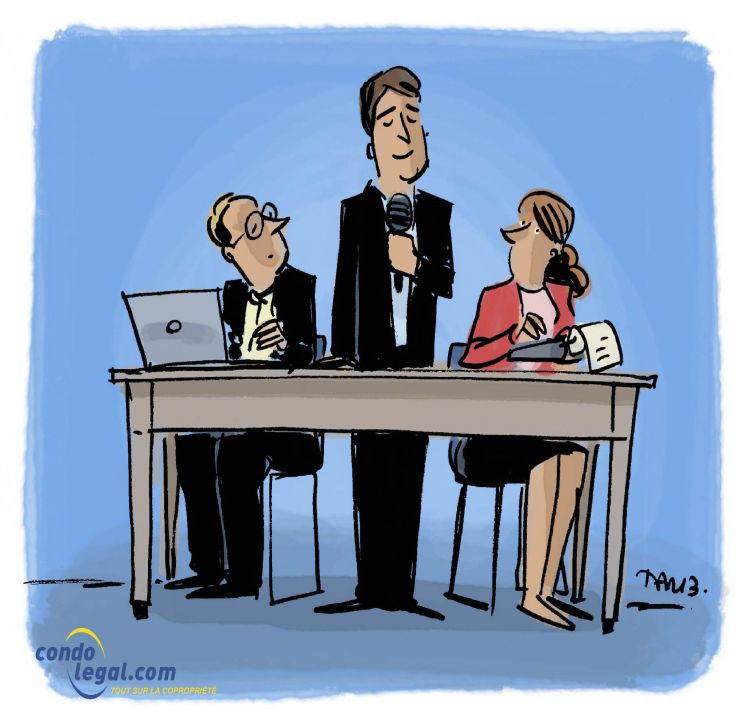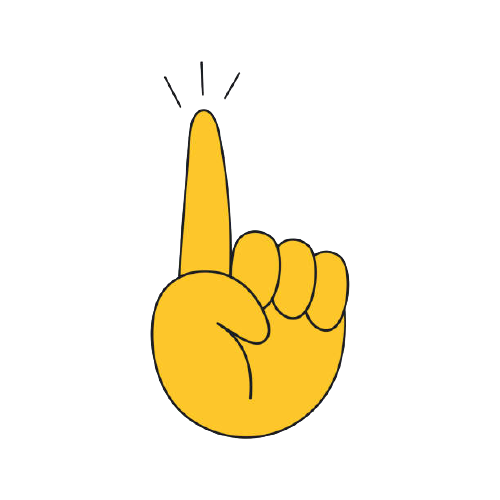Voting process

Co-owners must make decisions that are essential for the life of their co-ownership, which cannot be adopted by the board of directors without their consent. To this end, the meeting of co-owners brings together the co-owners or their representatives, at least once a year. In this context, the taking of these decisions is subject to a strict framework. Meetings of co-owners make decisions by taking a vote. Any proposal submitted for adoption must be voted on to become a resolution. Without being exhaustive, two voting procedures are set out in article 351 of the Civil Code of Quebec: a show of hands or, upon request, a secret ballot. The choice is predicated upon competing objectives of simplicity or confidentiality in the decision making process.
SHOW OF HANDS
Due to its swiftness, a show of hands is a widely used method. By nature, it is necessarily a non-secret vote, as each co-owner knows the vote of each other co-owner.
During this procedure, the president of the meeting will rely on raised hands to decide whether the draft resolution tabled was adopted or not.This approach has practical and legal limitations, since counting the votes accurately can sometimes be difficult, if not impossible, because:
- Of the large number of raised hands;
- Some co-owners may hold many proxies, which cannot be taken into account;
- Of the usually uneven distribution of votes between co-owners. (It is not a vote by co-owner);
- Of the special case of the splitting of votes between undivided co-owners, each of them expressing his votes separately without however increasing the weight of the votes allocated to their fraction;
- Of the complexity surrounding tallying the votes and counting the co-owners voting on a resolution requiring a double majority;
- Of the attendance of persons who do not hold a proxy (such as, a spouse who is not a co-owner).
This method should be used only in case of a unanimous vote of the co-owners present or represented or when the chairman is able to identify clearly the co-owners holding a sufficient number of votes to pass or reject a draft resolution.
ROLL CALL VOTE
This method proceeds to the tally of the votes by calling each fractions in the co-ownership. Each co-owner is thus called, in turn, to announce his decision. Although this process takes time, it has many benefits over a show of hands. It allows distinguishing clearly the decision of each co-owner who voted and how he voted. It also limits the risk of an error in the vote tally and thereby of legal challenges.
SECRET BALLOT
In order to ensure the discretion of the voter's choice, both at the time of the vote and after it, a secret ballot may be requested by the president of the meeting or by any co-owner present or represented. Unlike voting by show of hands and by roll call vote, a secret ballot is conducted for each resolution, using a voting form. It allows to clearly identify the position of each co-owner (in favor, against, or abstention).
Moreover, the co-ownership decision making process does not provide secret ballots, in a true sense, because article 1090 of the Civil Code of Québec stipulates that: "Each co-owner is entitled to a number of votes at a General Meeting proportionate to the relative value of his fraction." Thus, the ballot must necessarily indicate the number of votes attached to the fraction of the co-owner.
It is the duty of the president of the meeting to ensure the confidentiality of the scrutineers. In addition, ballot papers should be kept in a safe place and sealed for a period of more than 90 days following the meeting. Article 1103 of the Civil Code of Québec provides that any co-owner may apply to the court to annul or, exceptionally, to amend a decision of the general meeting if the decision is biased, if it was taken with the intent to injure the co-owners or in contempt of their rights, or if an error was made in counting the votes. An application for the annulment of a decision of a meeting must, under forfeiture, be instituted within 90 days of the date of the meeting.
HOW TO HAVE A PROPROSITION
A meeting of co-owners may deliberate only if it has before it a proposal. It then becomes a question under consideration. In principle, the meeting of co-owners can only vote on the questions validly on the agenda. This proposal is then generally supported by another co-owner or mandatary (called second proposer) so that it is possible to discuss it or proceed directly to the vote on the proposal. However, the need for it to be supported is not mandatory, unless a statement is stated in the declaration of co-ownership.
Under certain conditions, a draft resolution may be amended or clarified during the debates (discussion being the very object of the assembly). Such amendments or clarifications must not alter the meaning of the draft submitted to the vote. Following the deliberations, each co-owner may vote in favour of a proposal or against its adoption, or abstain. If this proposal is adopted, it will then become a resolution. Finally, as the distinguished authors Christine Gagnon and Yves Papineau point out: It is not good practice not to hold the vote on the presium of unanimity or majority. This could invalidate the decision. We must absolutely avoid asking the assembly whether someone is asking for a vote? This question can be replaced by: does anyone vote against or abstain from voting on this proposal?
 WHAT YOU SHOULD KNOW! A show of hands is better suited for small co-ownerships comprising approximately up to ten units, while for larger ones it is better to favor roll call votes or secret ballots to avoid an error in the calculation of the votes.
WHAT YOU SHOULD KNOW! A show of hands is better suited for small co-ownerships comprising approximately up to ten units, while for larger ones it is better to favor roll call votes or secret ballots to avoid an error in the calculation of the votes.
 WHAT TO KEEP IN MIND: In principle, at the meeting, the vote of the co-owners is done by show of hands. However the president of the meeting or the co-owners may prefer holding a ballot using voting forms. This type of ballot may also be required after a vote by show of hands, in the event the issue of the vote is uncertain. However, this demand should be made immediately, before addressing the next item on the agenda .
WHAT TO KEEP IN MIND: In principle, at the meeting, the vote of the co-owners is done by show of hands. However the president of the meeting or the co-owners may prefer holding a ballot using voting forms. This type of ballot may also be required after a vote by show of hands, in the event the issue of the vote is uncertain. However, this demand should be made immediately, before addressing the next item on the agenda .
 WARNING! Despite its quick results, the show of hands has its drawbacks in terms of democratic process. The undecided co-owners or those who do not wish to disclose openly their dissent will tend to imitate the choice of other co-owners, not to be frowned upon.
WARNING! Despite its quick results, the show of hands has its drawbacks in terms of democratic process. The undecided co-owners or those who do not wish to disclose openly their dissent will tend to imitate the choice of other co-owners, not to be frowned upon.
Return to the super-factsheet ''Voting in a Meeting of co-owners''